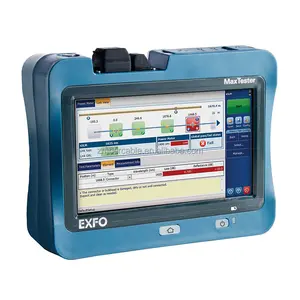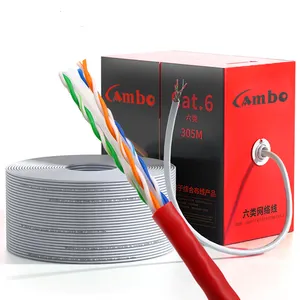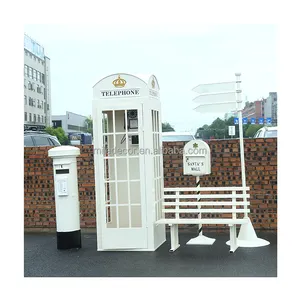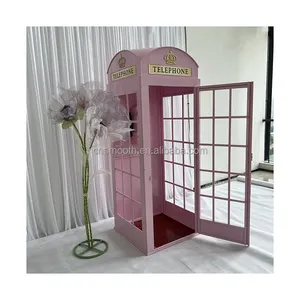Populer di industri Anda






Buatan Italia oleh HILTRON komponen sistem alarm XR seri RADIO detektor tirai infra merah LABEL pribadi tersedia
Rp 422.489 - Rp 528.111
Minimal Pesanan: 2 Buah






Buatan Italia oleh HILTRON SENSOR komponen sistem alarm untuk sakelar batas magnetik LABEL pribadi tersedia
Rp 89.259 - Rp 111.573
Minimal Pesanan: 2 Buah







Sensor penghalang tirai cahaya keselamatan, mesin Sensor Pelindung tangan, mesin kerja, pemindai keselamatan, Sensor Area
Rp 421.497 - Rp 834.728
Minimal Pesanan: 1 Set






Sensor Spanduk Konstruksi Kuat Sensor Pembatas Cahaya Ekonomis Sensor Sinar Fotolistrik Luar Ruangan Inframerah
Rp 662.163 - Rp 741.173
Minimal Pesanan: 1 Buah







Sertifikasi CE penghalang cahaya keamanan 4 jenis pelindung 25m jarak perlindungan NPN PNP tirai lampu keselamatan inframerah
Rp 396.703 - Rp 2.281.039
Minimal Pesanan: 1 Buah







Sensor Microwave kawat luar ruangan, penghalang detektor Perimeter MW jarak jauh 150 Meter untuk sistem Alarm keamanan rumah pertanian Villa
Siap Kirim
Rp 1.735.573 - Rp 1.776.897
Minimal Pesanan: 1 Buah
Pengiriman per potong: Rp 205.294






Pir nirkabel jarak jauh, pendeteksi gerakan tirai/sensor tirai 360 derajat pir
Rp 66.118 - Rp 79.341
Minimal Pesanan: 10 Set






YET402WIFI remote kontrol pintu universal, pemancar penerima nirkabel jarak jauh sensor fotosel untuk gerbang penghalang
Rp 141.326 - Rp 148.764
Minimal Pesanan: 100 Buah




Perimeter Sinar Laser Keamanan Jarak Jauh Sistem Alarm Sinar Laser Detektor Penghalang Microwave Pagar Listrik
Rp 4.958.780 - Rp 5.785.244
Minimal Pesanan: 50 Pasang






YET158 roller shutter nirkabel, kontrol jarak jauh pintu garasi frekuensi dan penerima unit fotosel sensor lampu luar ruangan
Rp 29.753 - Rp 38.018
Minimal Pesanan: 50 Buah
Pengiriman per potong: Rp 118.681





Detektor Inframerah Sensor Maling Inframerah Empat Sinar, Detektor Inframerah untuk Penghalang Parkir Pagar ABH
Siap Kirim
Rp 558.690 - Rp 578.525
Minimal Pesanan: 1 Buah






Harga promosi fotosel Sensor inframerah sinar tunggal jarak jauh untuk industri keamanan gerbang otomatis industri
Rp 82.647 - Rp 247.939
Minimal Pesanan: 2 Buah
Pencarian Terkait:
sensor radar microwave yang kecilsensor radar jarak jauhsensor deteksi keberadaansensor deteksi gerak jarak jauhsensor kedalaman bawah air 20masensor deteksi hujansensor deteksi lalu lintassensor pencurisensor perpindahan talisensor deteksi apisensor ruang cahaya keamanansensor deteksi penyusupsensor deteksi intrusisensor balok keamanan luar ruangansensor tester alkohol

Sistem Keamanan Sinar Laser Detektor Penghalang Sinar Inframerah Lebar Sensor Sinar Inframerah Deteksi Jarak Jauh
Rp 198.352 - Rp 1.322.342
Minimal Pesanan: 1 Pasang






Sensor Microwave kawat luar ruangan, sistem keamanan anti-maling dinding pertanian Villa penghalang sinar MW jarak jauh 150 Meter
Siap Kirim
Rp 2.438.067 - Rp 2.495.920
Minimal Pesanan: 1 Buah
Pengiriman per potong: Rp 205.625






YET026 saklar kendali jarak jauh nirkabel, pemasok pemancar jarak jauh sensor fotosel untuk gerbang penghalang
Rp 33.059 - Rp 49.588
Minimal Pesanan: 100 Buah






Wolf guard Aksesori sistem alarm keamanan rumah, repeater sinyal nirkabel jarak jauh, transmisi WIFI 300m 433mhz
Siap Kirim
Rp 214.881 - Rp 264.469
Minimal Pesanan: 1 Set
Pengiriman per potong: Rp 245.295






Detektor Microwave kawat luar ruangan, pagar Perimeter 150-Meter jarak jauh MW Sensor sinar untuk keamanan rumah sistem anti-maling
Rp 1.735.573 - Rp 1.776.897
Minimal Pesanan: 1 Buah






Shenzhen Yaoertai Sensor Inframerah Laser Reflektif Universal Nirkabel Berkualitas Tinggi Sensor
Siap Kirim
Rp 504.143 - Rp 578.525
Minimal Pesanan: 2 Buah
Pengiriman per potong: Rp 341.330






Shenzhen Yaoertai Sensor Penghalang Inframerah Universal Nirkabel YET610, Berkualitas Tinggi
Siap Kirim
Rp 82.647 - Rp 132.235
Minimal Pesanan: 2 Buah
Pengiriman per potong: Rp 62.977



1.5 M Jarak Jauh Kualitas Tinggi 24 V Pitch Tirai Cahaya Barrier Perlindungan Sensor
Rp 1.516.726 - Rp 2.090.457
Minimal Pesanan: 2 Buah






TOF 100Hz Sensor jarak Laser, Sensor jarak Laser Las 100m Sensor penghalang jarak jauh untuk transportasi pintar
Rp 709.106 - Rp 1.123.991
Minimal Pesanan: 2 Buah
Pengiriman per potong: Rp 292.899






Sensor tirai penghalang cahaya inframerah, mesin besar dengan jarak penginderaan ultra panjang 80mm
Rp 2.115.747 - Rp 7.487.758
Minimal Pesanan: 3 Set
Pengiriman per potong: Rp 261.493






Sensor Radar jarak jauh, 77GHz Multi-target radar Microwave kendaraan detektor loop jarak jauh untuk mobil untuk jalan raya
Siap Kirim
Rp 8.727.453 - Rp 9.058.038
Minimal Pesanan: 1 Buah
Pengiriman per potong: Rp 138.681






Baru EB15 tirai lampu keselamatan jarak jauh penginderaan untuk Sensor keamanan industri
Rp 370.256 - Rp 753.735
Minimal Pesanan: 1 Set






IP65 tirai cahaya pengaman tahan air sensor infra merah dan sensor tirai cahaya
Rp 3.305.854 - Rp 8.264.633
Minimal Pesanan: 1 Set






Diskon besar tirai lampu keselamatan pemasangan fleksibel deteksi presisi tinggi jarak penginderaan panjang
Rp 396.703 - Rp 2.281.039
Minimal Pesanan: 1 Buah






XAORI Gorden Keselamatan Laser Sensor Penghalang 24V DC PNP, Rentang Perlindungan 40M Baru dan Asli
Siap Kirim
Rp 1.487.634 - Rp 1.983.512
Minimal Pesanan: 1 Buah
Pengiriman per potong: Rp 497.201




1.5M Jarak Jauh Kualitas Tinggi 24V Pitch Tirai Cahaya Barrier Perlindungan Sensor
Rp 1.516.726 - Rp 2.090.457
Minimal Pesanan: 2 Buah






DQT Sensor tirai pengaman jarak jauh, fungsi pemeriksaan diri lengkap industri Ultra panjang Sensor tirai
Rp 1.619.869 - Rp 7.322.465
Minimal Pesanan: 3 Set
Pengiriman per potong: Rp 261.328






YET402PC-V3.0 roller shutter nirkabel pengendali jarak jauh dan unit penerima sensor fotosel lampu luar ruangan
Siap Kirim
Rp 99.176 - Rp 115.705
Minimal Pesanan: 100 Buah
Pengiriman per potong: Rp 10.083






Pelindung tangan pengaturan jarak jauh, sensor tirai cahaya keselamatan kisi-kisi keamanan
Rp 326.784 - Rp 640.840
Minimal Pesanan: 1 Set






VIFAR tirai lampu keselamatan, disesuaikan ultra panjang jarak deteksi aman sensor aluminium Aloi
Rp 396.703 - Rp 2.281.039
Minimal Pesanan: 1 Buah






YET863 & YET2111 pembuka pintu garasi, pengontrol cerdas pintu otomatis nirkabel dengan jarak jauh RF Universal
Rp 238.683 - Rp 249.427
Minimal Pesanan: 10 Buah






DC12-30V 380mm tinggi pelindung keselamatan cahaya tirai NPN PNP atau Output Relay 20m Sensor inframerah keamanan jarak jauh
Rp 321.164 - Rp 938.036
Minimal Pesanan: 1 Set






Lampu sorot jarak jauh, sensor keselamatan penghalang tirai untuk mesin besar 20mm perlindungan jarak jauh
Rp 1.619.869 - Rp 6.991.880
Minimal Pesanan: 3 Set
Pengiriman per potong: Rp 261.328





YET005 roller shutter nirkabel, pengontrol jarak jauh 433 kontrol dan penerima unit fotosel sensor lampu luar ruangan
Rp 37.191 - Rp 49.588
Minimal Pesanan: 100 Buah






DQS Sensor pembatas tirai lampu keselamatan, balok biaya rendah Industri menggunakan lingkungan berbahaya jarak jauh
Rp 2.677.742 - Rp 5.768.714
Minimal Pesanan: 1 Buah
Pengiriman per potong: Rp 436.373






Dekorasi tirai Keamanan Resolusi 20mm pengirim dan penerima seri ESN IP65 tirai lampu keselamatan braket paduan aluminium L1
Rp 764.975 - Rp 1.832.766
Minimal Pesanan: 1 Set






GPT244 3000 M Jarak Jauh GPRS/Nirkabel Lora Sensor Tekanan Diferensial
Rp 11.934.131
Minimal Pesanan: 1 Buah






Jarak Jauh Photocell Inframerah Tirai Cahaya Keselamatan Sensor/Hand Protection Sensor untuk Mesin
Rp 2.975.268 - Rp 7.934.048
Minimal Pesanan: 1 Set
Kategori terbaik
Tentang sensor penghalang jarak jauh
Alibaba.com menawarkan 83 produk sensor penghalang jarak jauh. Berbagai macam pilihan sensor penghalang jarak jauh tersedia untuk Anda, seperti akses internet nirkabel, gsm, dan tcp. Anda juga dapat memilih dari pintu, pribadi sensor penghalang jarak jauh. Juga dari tahan air sensor penghalang jarak jauh.






















